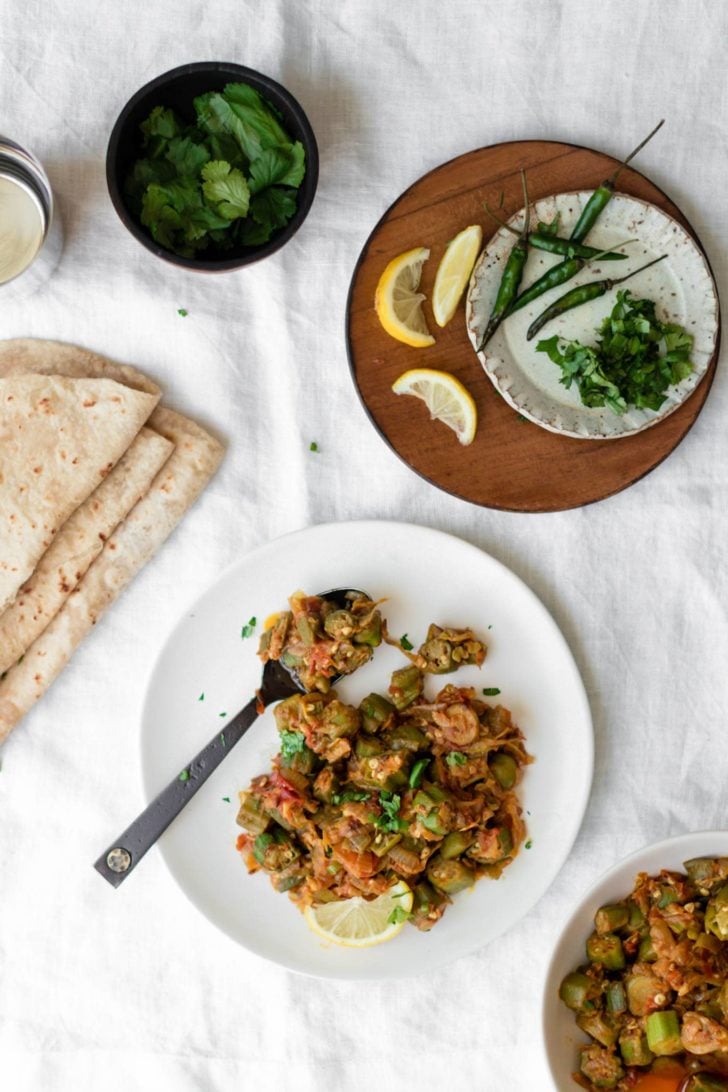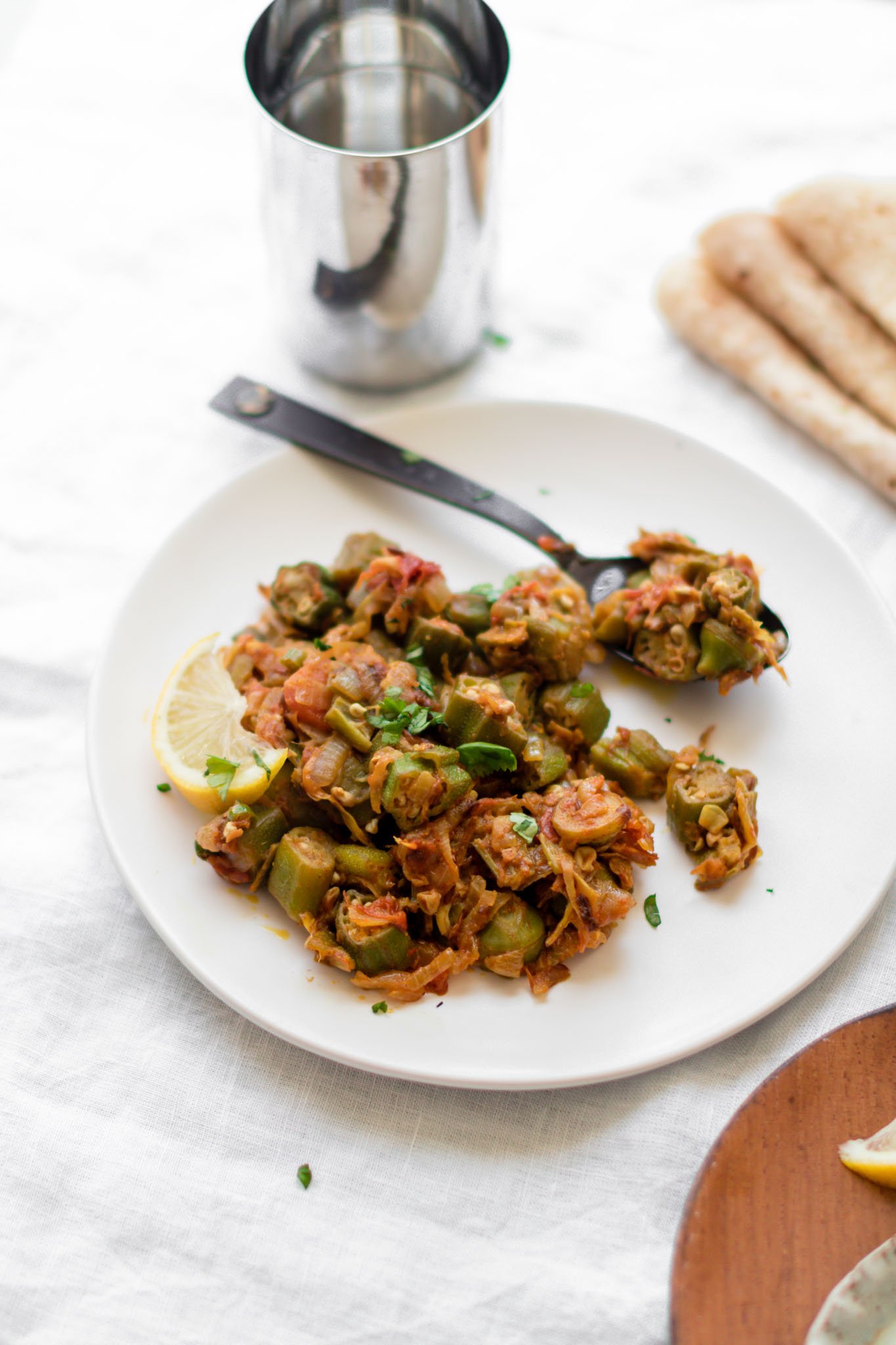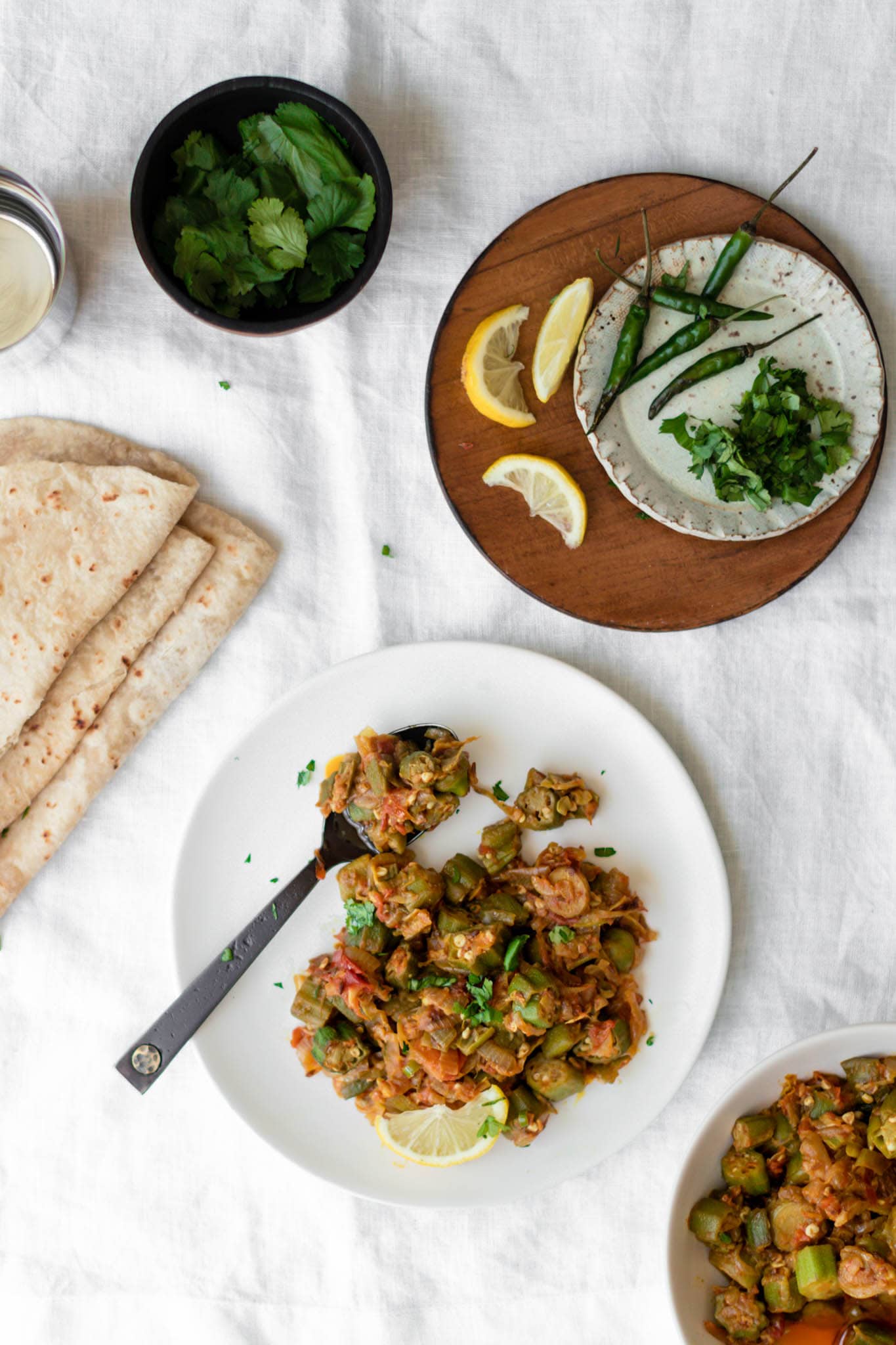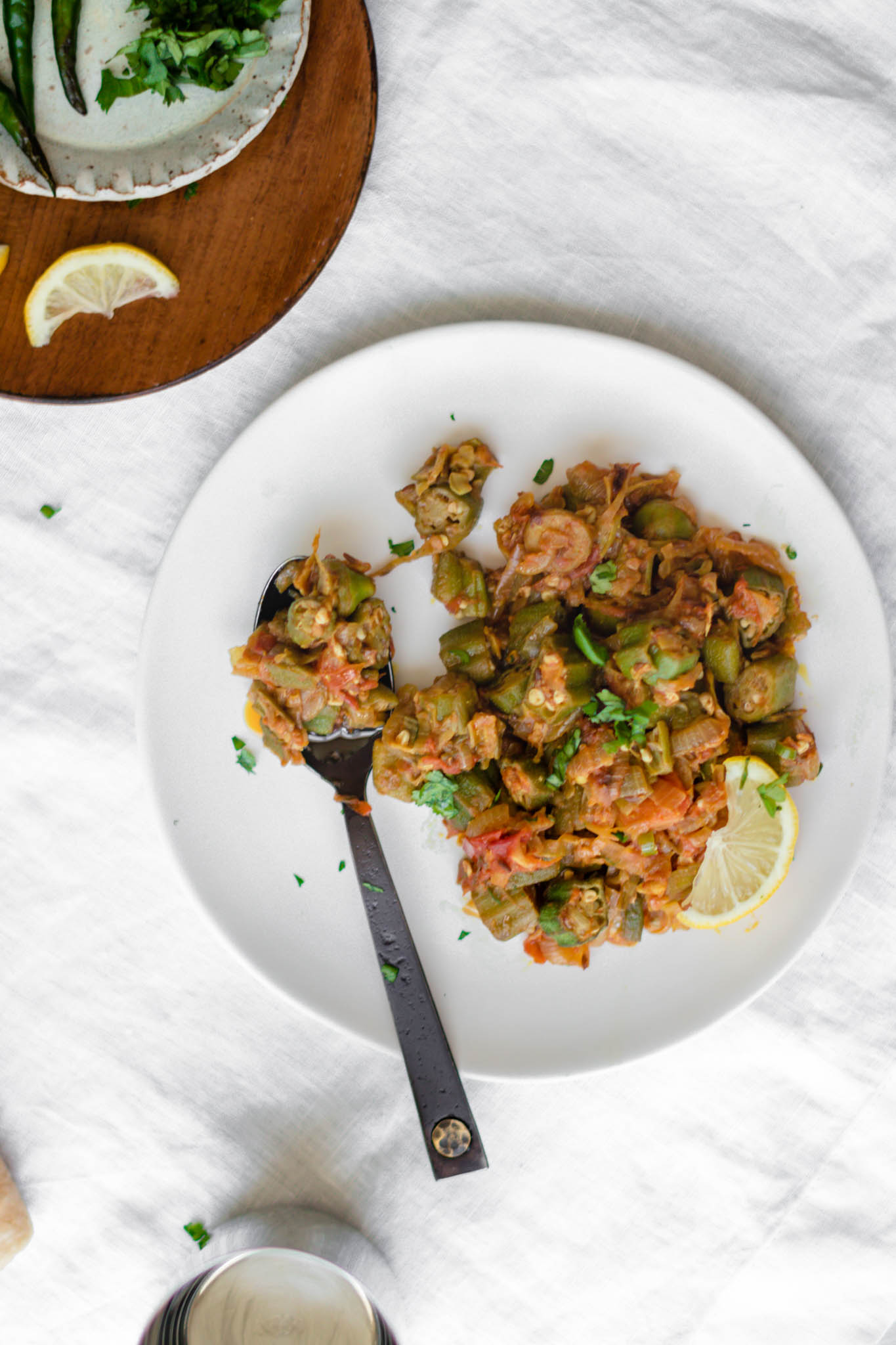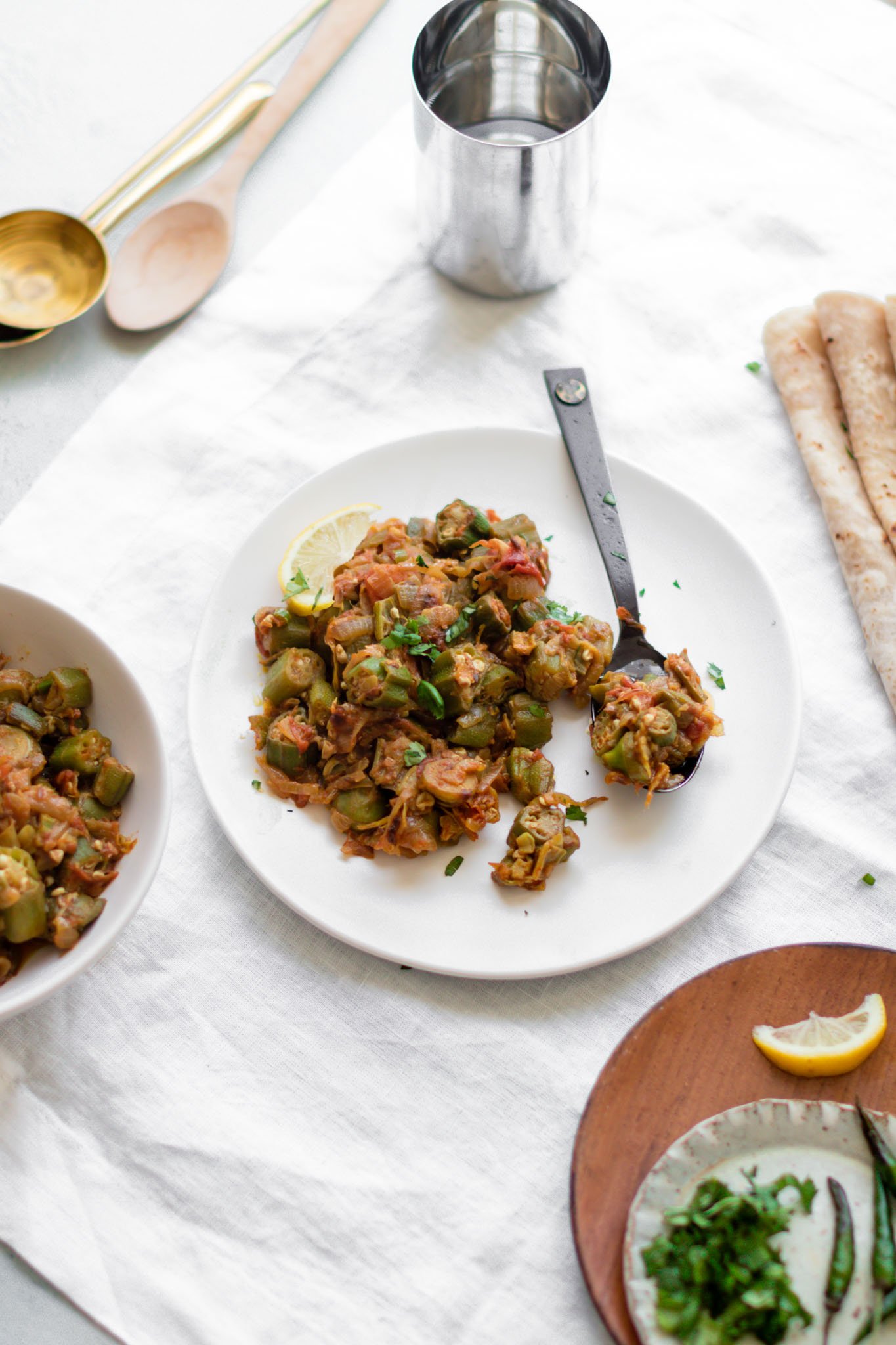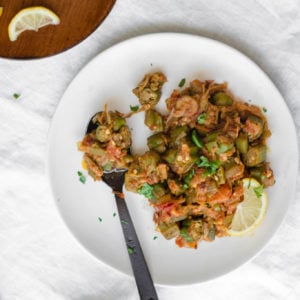What is Okra?
Okra comes from a flowering plant that bears long, edible pods we know as okra (or bhindi). It’s consumed throughout the world and grows well in warm climates, which explains why it’s used so widely in parts of Pakistan & India. Enter your email below and get it sent straight to your inbox. Plus, get recipes & tips every week! To experience okra fully, you must try the Pakistani & Indian version of it. It’s savory, a little spicy, and gives the vegetable a whole new dimension.
How to Cook Okra without Slime
With okra comes slime. But rest assured, you’ll be getting rid of it. Here are some traditional Indian/Pakistani cooking techniques that ensure flavorful, slime-free okra: While some traditional recipes deep-fry the okra, we are lightly frying it using just enough oil to get rid of the slime but still keep the crisp flavor.
How to Cook Bhindi (Okra Curry)
In this method of making bhindi, first we fry the okra to reduce the slime. (I pan fry it to keep things healthier and less flammable.) Then, we set the okra aside and make the curry with plenty of sliced onions and tomatoes. Lastly, combine them both to get the most comforting, flavorful, okra curry.
More Tips
Cut the okra so it’s in between 1/2 to 3/4 of an inch. It’s best not to slice the okra too thin as it can shrivel up and lose its juicy taste. Salt the okra while initially pan-frying it. This ensures maximum flavor in every bite. Be patient when sautéing the onions. They reduce down quite a bit and the caramelized onions give a beautiful flavor to this dish. I highly recommend using fresh okra, but you can also use frozen. Just place it in a colander and set aside to defrost. Then use a paper towel to dry the okra so it doesn’t splatter when pan-frying. Note that if you use frozen okra, you may have to fry 2-3 minutes longer (Step 2).
How to Serve Okra Curry
Since this is a ‘dry’ curry, it’s usually served with roti, naan, or other bread. This Okra Curry also pairs well with Masoor Dal.
